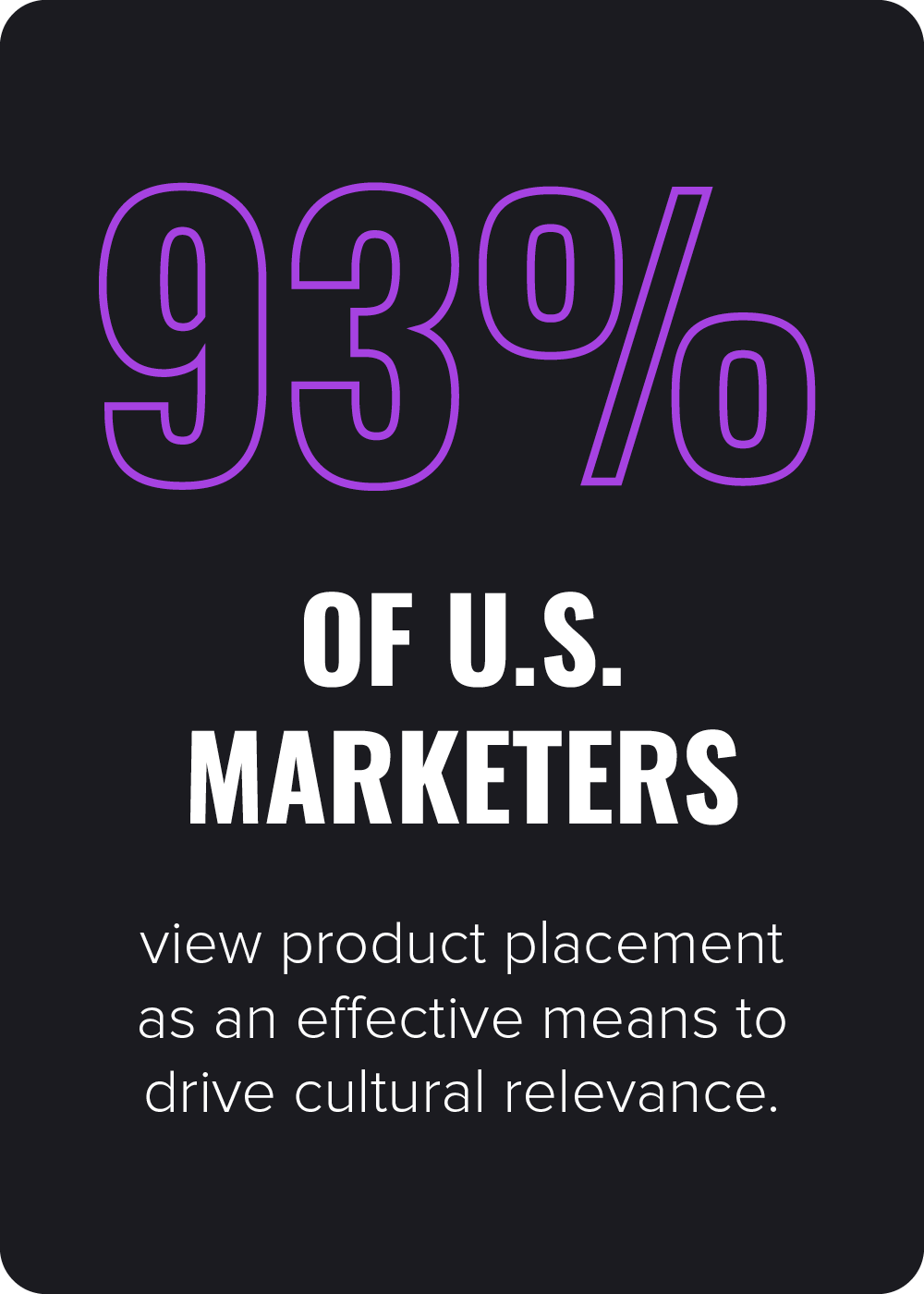Creating Unskippable Moments (for every audience)
Culture has always played a pivotal role in society, shaping our beliefs and behaviors. Brands that have seen the most success are the ones that are able to understand and leverage the elements that influence culture. One of the most significant drivers of culture is entertainment — TV, film, and music. Entertainment often reflects the values, beliefs, and norms of a society and can contribute to the formation and reinforcement of cultural identity. Brands can harness the power of entertainment through product placement and utilize it to tap into cultural events, support social issues, and amplify voices that are traditionally less heard. Product placement can help brands be part of the entertainment that is driving the social conversation.

“Consumers crave more than just transactional relationships with brands. Consumers want brands and culture to intersect in meaningful ways.”
— Erin Schmidt, BEN Chief Product Placement Officer
By leveraging the power of product placement, brands are able to create meaningful connections with audiences seeking characters and stories that resonate with their own experiences. With minorities now accounting for nearly 40% of the U.S. population, connecting with these demographics is no longer an option but a necessity. The potential rewards are substantial, as research reveals that minorities exhibit better recall of product placements and higher purchase intent from integrations when compared to white audiences.
The Need for Unskippable Moments
There has been a remarkable surge in content consumption over the past few years, with people spending more time engaging with various forms of media. From 2017 to 2022, the average weekly content consumption time increased from 50 to 56 hours, with the average U.S. adult dedicating 5.8 hours per day to watching TV and digital video.


Ad-skipping and ad-avoidance habits are also on the rise. A substantial 76% of users who skip ads admitted to doing so out of habit (IPG, 2017). When given the option, 52% of consumers prefer watching TV programs with product placements rather than traditional advertising. Brand integrations in entertainment not only lead to better product recall but also foster a stronger connection with the advertised products compared to standalone ads. Thus, by incorporating product placement into their marketing strategies, brands can create unskippable moments while remaining culturally relevant.
THE SOLUTION: PRODUCT PLACEMENT
The profound cultural influence of entertainment cannot be overstated. The 2023 State of Product Placement reveals that 93% of U.S. marketers recognize the efficacy of product placement in fostering cultural relevance for brands. Being a part of the content audiences love is a potent avenue for brands to immerse themselves in the cultural currents that define society. It is no secret that Barbie wasn’t merely a movie; it was a cultural phenomenon that took the world by storm. Through an organic integration campaign, GM – the car manufacturer – was able to leverage the popularity and success of the movie, earning nearly $8 million in product placement value over the movie’s opening weekend alone. The automaker’s values and vision, aligned with the movie’s message of empowerment, ultimately amplifying the cultural relevance of the brand, making GM part of the unmissable Barbie conversation.
The season-long brand integration of Aperol within HBO’s series season 2 of The White Lotus stands out as a prime example of a successful product placement campaign tapping into pop culture. Throughout the show, characters were frequently seen enjoying Aperol Spritz cocktails. This piqued the curiosity of the viewers about the orange drink, which had been a long-time favorite in Europe but was relatively new to U.S. audiences. The White Lotus Season 2 finale garnered a viewership of 4.1 million Americans in December 2022. Following the success of the series, Aperol experienced a significant boost in sales, with a remarkable 50% growth rate in the U.S. market. Industry experts dubbed this phenomenon “The White Lotus Effect,” highlighting the impact of the show on Aperol’s popularity and success in the U.S. market.


Music can also be an impactful culture driver, as showcased by the integration of Durex in Lil Nas X’s That’s What I Want official music video. Durex, a popular condom brand, had been looking for a brand integration that was aligned with its values centered around embracing sexual fluidity. The opportunity to be featured in a Lil Nas X music video arose and made sense for the brand since the rapper was known for authentically expressing his sexuality. That’s What I Want official music video was released in September 2021, during Sexual Health Awareness month. The music video features Lil Nas X ripping a Durex condom package open with his teeth at an important point in the video. This collaboration became a finalist for the Drum Awards after reaching over 115M views and driving 74% consideration, 71% lift in visits to Durex social and a remarkable 3350% lift in search terms surrounding sexual health.

By harnessing the power of product integrations, brands demonstrate their alignment with cultural values, capture diverse markets, take place in the cultural conversation, and enhance their position in the entertainment landscape.


